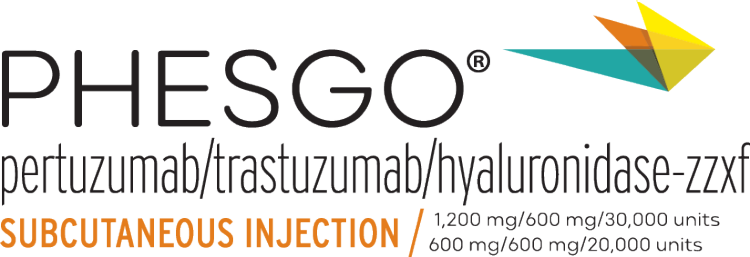Quick Links
The FeDeriCa trial
The PHranceSCa trial

Most major insurance plans provide coverage for PHESGO*5
*Data current as of June 2025. Insurer policies may vary and are subject to change.
-
-
PHESGO Prescribing Information. Genentech, Inc. 2024.
PHESGO Prescribing Information. Genentech, Inc. 2024.
-
Tan AR, Im S-A, Mattar A, et al. Fixed-dose combination of pertuzumab and trastuzumab for subcutaneous injection plus chemotherapy in HER2-positive early breast cancer (FeDeriCa): a randomised, open-label, multicentre, non-inferiority, phase 3 study. Lancet Oncol. 2021;22(1):85-97.
Tan AR, Im S-A, Mattar A, et al. Fixed-dose combination of pertuzumab and trastuzumab for subcutaneous injection plus chemotherapy in HER2-positive early breast cancer (FeDeriCa): a randomised, open-label, multicentre, non-inferiority, phase 3 study. Lancet Oncol. 2021;22(1):85-97.
-
Data on file. Genentech, Inc.
Data on file. Genentech, Inc.
-
O’Shaughnessy J, Sousa S, Cruz J, et al. Preference for the fixed-dose combination of pertuzumab and trastuzumab for subcutaneous injection in patients with HER2-positive early breast cancer (PHranceSCa): A randomised, open-label phase II study. Eur J Cancer. 2021;152:223-232.
O’Shaughnessy J, Sousa S, Cruz J, et al. Preference for the fixed-dose combination of pertuzumab and trastuzumab for subcutaneous injection in patients with HER2-positive early breast cancer (PHranceSCa): A randomised, open-label phase II study. Eur J Cancer. 2021;152:223-232.
-
Data on file. Genentech, Inc. MMIT Analysis. HLI Lives Database.
Data on file. Genentech, Inc. MMIT Analysis. HLI Lives Database.
-
-
